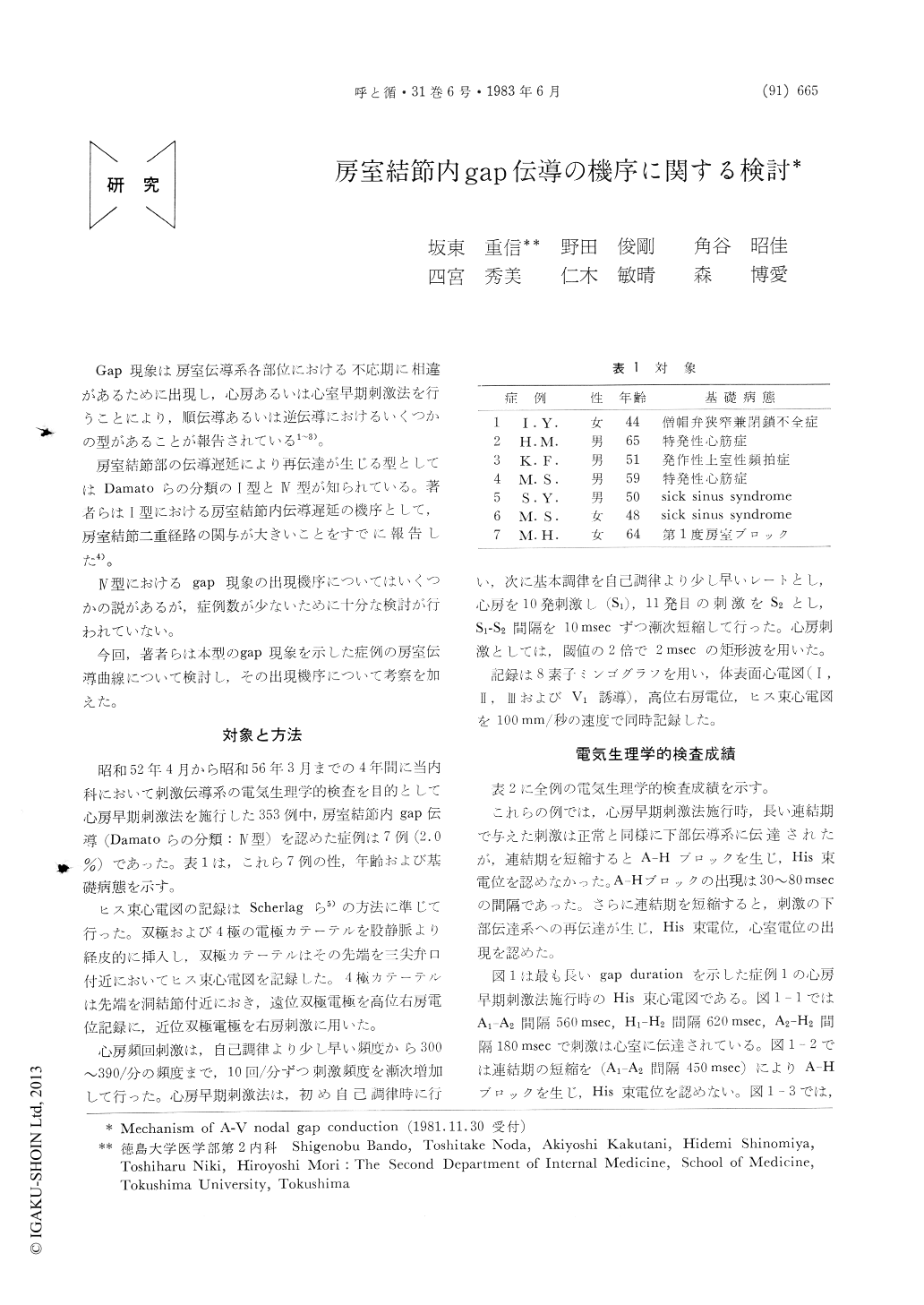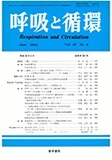Japanese
English
研究
房室結節内gap伝導の機序に関する検討
Mechanism of A-V nodal gap conduction
坂東 重信
1
,
野田 俊剛
1
,
角谷 昭佳
1
,
四宮 秀美
1
,
仁木 敏晴
1
,
森 博愛
1
Shigenobu Bando
1
,
Toshitake Noda
1
,
Akiyoshi Kakutani
1
,
Hidemi Shinomiya
1
,
Toshiharu Niki
1
,
Hiroyoshi Mori
1
1徳島大学医学部第2内科
1The Second Department of Internal Medicine, School of Medicine, Tokushima University
pp.665-669
発行日 1983年6月15日
Published Date 1983/6/15
DOI https://doi.org/10.11477/mf.1404204249
- 有料閲覧
- Abstract 文献概要
- 1ページ目 Look Inside
Gap現象は房室伝導系各部位における不応期に相違があるために出現し,心房あるいは心室早期刺激法を行うことにより,順伝導あるいは逆伝導におけるいくつかの型があることが報告されている1〜3)。
房室結節部の伝導遅延により再伝達が生じる型としてはDamatoらの分類のI型とIV型が知られている。著者らはI型における房室結節内伝導遅延の機序として,房室結節二重経路の関与が大きいことをすでに報告した4)。
Electrophysiological studies were performed in 353 cases. In seven of 353 cases, A-V nodal gap conduction (Damato's classification : Type 4) occured.
In these cases, during the gap zone, non-conduc-ted atrial premature beats were not followed by His bundle deflections. When coupling intervals were shortened, atrial premature beats resumed conduction to the ventricle.
Analysis of A-V nodal conduction curves suggested the existence of dual A-V nodal pathways in five of 7 cases.

Copyright © 1983, Igaku-Shoin Ltd. All rights reserved.


